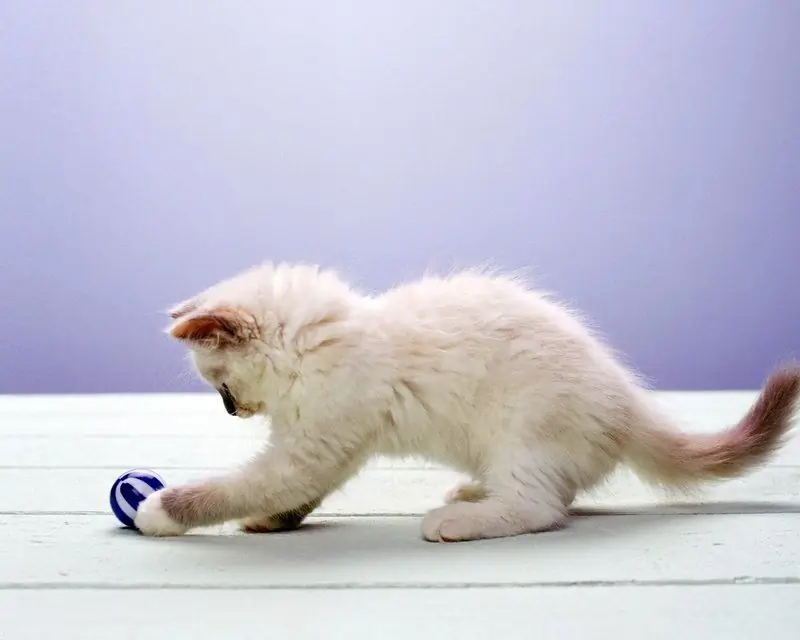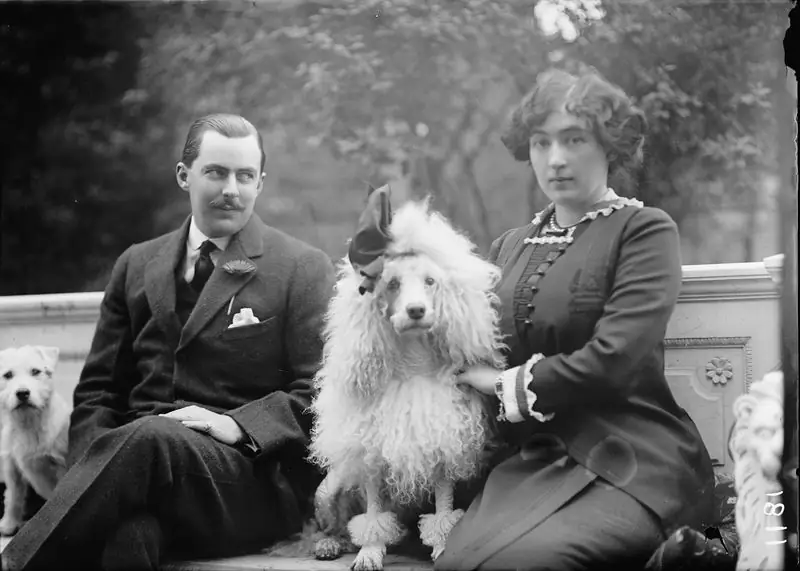
Table of contents:
- Author Bailey Albertson [email protected].
- Public 2023-12-17 12:53.
- Last modified 2025-01-23 12:41.
A photographer I knew told me why no one smiles in old photographs, and they always put their hand on their shoulder

I recently took pictures in the studio of a good friend of mine. He is well versed in his craft and knows a lot of interesting things from the history of photography. The pictures I wanted were taken very quickly, and we chatted about how long people had to pose for pictures in the past.
An acquaintance asked if I knew why people in old photographs did not smile, and those standing always put their hand on the shoulder of those who were sitting. I did notice these features in yellowed shots from home archives, but I never wondered why people did this.
The first is connected with the duration of the posing. When the process of imaging takes a few minutes, it is difficult to keep a smile on your face. Later, devices with a relatively short exposure appeared, but people continued to follow the tradition laid down by their predecessors for a long time.
A decent person should have shown his seriousness and solidity, not a playful attitude. Taking photographs was regarded as a very important and significant procedure. Most could only afford one photograph for a lifetime, so a "frivolous" smile was considered inappropriate.
The third reason is that the art of photography has its origins in painting, and smiles in artists' portraits have been a rare occurrence for many centuries.
Of course, the unsmiling faces of distant ancestors are to some extent associated with the poor condition of the teeth, the hygiene of which in past centuries was primitive. But the desire to remain in the memory of posterity as a respectable and serious person played a role.

The palm on the neighbor's shoulder was also placed due to the long exposure of the first cameras. It made it easier to stand in one position so that random movement would not blur the image. It turns out that in single photographs, posing also tried to lean on some object as much as possible - usually on a whatnot or stand.
In addition, many people, especially from the lower strata of society, because of the excitement in front of the camera, began to involuntarily move their hands and wiggle their fingers.
If the photo studio did not have special stands, the photographer could give the posing to hold an object, and those who were photographed as a couple were asked to shake hands.
Such an interesting story was hidden behind old photographs.
Recommended:
Interesting Facts About Cats And Cats: What Taste They Don't Feel, Do They Sweat, Do They Understand Human Speech And Answers To Other Questions

How cats differ from humans. How cats feel, hear, see, remember. Their relationship to the game. What does purr and tail wagging mean. Reviews
Whiskers In Cats And Cats: What Are They Called Correctly And Why They Are Needed, What Will Happen If You Cut Them And Why They Fall Out Or Become Brittle

Features of the structure of the mustache in cats. What are they called and where they are located. What functions do they perform. What problems can a cat with a mustache have? Reviews
What To Do With Photographs Of Deceased Relatives, Can They Be Kept At Home

Is it possible to store photographs of the deceased at home and how to do it correctly. Where is it better to keep photos of deceased relatives and friends
Why Russians And Americans Keep Eggs In The Refrigerator, But Europeans Don't: Who Is Right

Eggs and salmonellosis. Principles of protection against salmonella in the USA, Europe and Russia. Can eggs be stored without a refrigerator? Storage periods
Black Star Girls And Wives: Who They Are And Why They Are So Similar

Girls and wives of the guys from Black Star. Who are they, how did they meet their beloved, what they do. Why are Black Star's wives and girlfriends so similar
